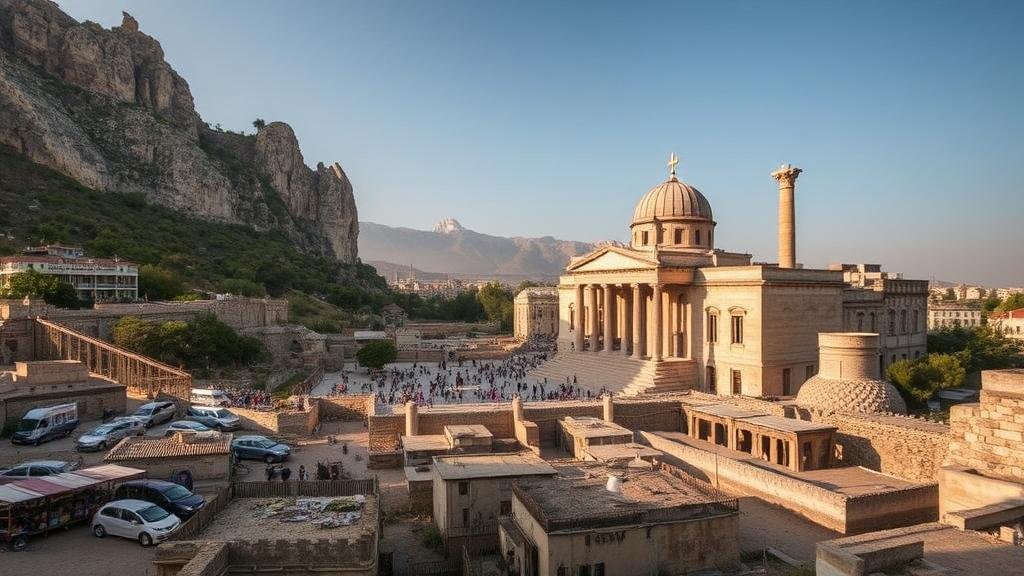Searching for the long-forgotten city of Tarsus, a trading hub linked to ancient myths.
The Search for the Long-Forgotten City of Tarsus
For millennia, the city of Tarsus has intrigued historians, archaeologists, and travelers alike. Once a bustling trading hub linked to various ancient myths and historical events, Tarsus is poised at the crossroads of history. Even today, its remnants beckon researchers seeking to unveil the secrets of a civilization that flourished in antiquity.
A Brief Historical Overview
Tarsus, located in modern-day Turkey in the region of Cilicia, has been inhabited since at least 3000 BCE. city features a rich tapestry of cultures and influences, including Hittites, Assyrians, Persians, Greeks, and Romans. Historically, Tarsus was renowned for its strategic position along trade routes between the East and West. Notably, it was the birthplace of Paul the Apostle, one of early Christianitys most significant figures, further embedding the city in the narrative of Western history.
Mythical Connections
Tarsus is often associated with formidable legends and myths, most notably being tied to the figures of mythology such as Aphrodite, the goddess of love, beauty, and fertility. It is said that Tarsus was her birthplace, enriching the city’s allure with connections to divine tales.
Also, Tarsus features in many other ancient narratives. For example, the early Greek geographer Strabo described it as a location where the goddess was worshipped, detailing elaborate temples and rituals that attracted pilgrims from far and wide.
The Trading Culture of Tarsus
The significance of Tarsus as a trading hub cannot be overstated. During its peak in the 1st century BCE, Tarsus served as a vital commercial center. Goods such as spices, silks, and precious metals flowed through its markets, connecting various cultures and economies. The citys market attracted merchants from regions as diverse as Persia and Rome, creating a melting pot of ideas and traditions.
- Archaeological findings suggest that Tarsus had a thriving economy supported by its rich agriculture.
- Evidence of advanced pottery techniques illustrates the citys artisan skills.
Statistically, it is estimated that during the Roman era, the population of Tarsus exceeded 50,000, making it one of the largest cities in the Mediterranean world. Its contribution to commerce and culture during this period was instrumental in shaping the socio-political landscape of the region.
The Archaeological Quest
Despite centuries of historical significance, much of Tarsus remains shrouded in mystery, lying beneath layers of time. Archaeologists have made significant discoveries in the area, yet there is much more at stake in understanding its full historical context.
Major archaeological sites include:
- The ancient Roman road that connects Tarsus to the broader Mediterranean trade network.
- The well-preserved remains of the Roman theater, which could seat over 3,000 spectators.
- The site of the ancient Temple of Tarsus dedicated to the cult of Aphrodite.
These discoveries have provided vital insights into the architectural and cultural nuances of the time. In recent years, technological advancements like Ground-Penetrating Radar (GPR) have allowed archaeologists to explore deeper beneath the surface without invasive excavation methods, hinting at even more undiscovered layers of history.
Real-World Applications of Tarsus History
The rich history of Tarsus serves multiple modern applications. Today, the city is a focal point for educational tourism, inspiring students, researchers, and history enthusiasts. Institutions can leverage this historical significance through:
- Organizing archaeological tours and educational workshops.
- Creating collaborative research programs that delve into ancient trade mechanisms.
- Utilizing findings in discussions around cultural exchange in antiquity.
Conclusion: The Ongoing Legacy of Tarsus
Tarsus stands as a testament to human civilizations rich history and shared cultural heritage. As efforts continue to uncover its long-forgotten stories and artifacts, the legacy of Tarsus will undoubtedly enrich our understanding of the ancient world and its lasting impact on modern society. The quest for Tarsus is not merely about discovery but about connecting the past with the present, fostering appreciation for the intricate tapestry of human history.

